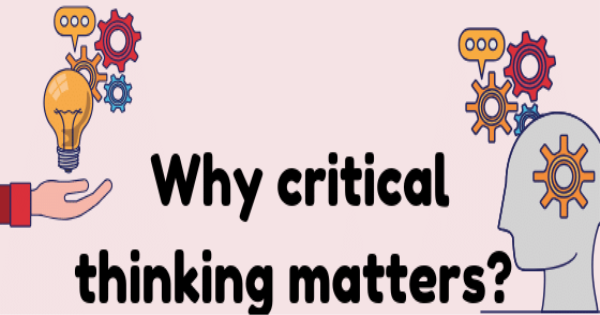In 2025, entry test patterns across Pakistan’s major universities and testing bodies are undergoing significant transformations. These changes aim to modernize assessments, reduce rote learning, and better evaluate critical thinking, analytical ability, and subject understanding. Whether you're preparing for MDCAT, ECAT, NUST NET, GIKI, LUMS SBASSE, or FAST, understanding these updated patterns is essential for success.
In this article, we’ll break down the key updates in entry tests, why they are happening, and how students can adapt their preparation accordingly.
Why Entry Test Patterns Are Changing in 2025
The shift in entry test patterns isn’t arbitrary. Here are some reasons behind the change:
Alignment with International Standards: Institutions like LUMS, NUST, and UET aim to meet global benchmarks in assessing applicants.
Reduced Rote Learning: There's an increasing push toward conceptual and application-based learning.
Digital Transformation: More universities are now conducting computer-based tests (CBTs).
National Curriculum 2022 Implementation: Entry tests now align with Pakistan’s new single national curriculum (SNC) in several regions.
Key Changes in Major Entry Tests in 2025
1. MDCAT 2025 (Medical & Dental Colleges Admission Test)
Test Mode: CBT (Computer-Based Test) for most provinces
Updated Syllabus: Aligned with the new FSc curriculum of Punjab, KP, Sindh, and Balochistan boards
Question Types: More scenario-based MCQs in Biology and Clinical Reasoning
Difficulty Level: Increase in analytical reasoning, less factual recall
Tip: Focus on NCERT-style conceptual clarity, especially in Biology and Chemistry.
2. ECAT 2025 (Engineering Colleges Admission Test - UET)
Test Pattern: Emphasis on mathematics reasoning and physics application
New Sections: Logical reasoning section added in some universities
Question Types: Fewer direct formula-based questions, more real-world problem-solving scenarios
Tip: Practice past papers but with a conceptual approach. Understand the “why” behind the formulas.
3. NUST NET 2025
Test Format: Remains modular, but digital interface improved
Mathematics: More advanced topics from A-Level integrated for engineering
English: Analytical reasoning now part of comprehension section
Mock Integration: NUST introducing AI-powered mock simulations for better evaluation
Tip: Practice timed CBTs and develop quick reasoning skills.
4. LUMS SBASSE 2025
Syllabus Change: Incorporation of data interpretation and visual reasoning
Test Interface: Fully online, adaptive format
Subjects: Optional advanced math and physics sections for higher merit weightage
Tip: Use SAT and GRE-style practice for better preparation.
5. FAST, GIKI & COMSATS 2025
Common Trends:
Greater weightage on analytical skills
Vocabulary-based MCQs reduced; critical reading increased
Programming logic MCQs introduced in CS streams
Tip: Focus on aptitude development, not just textbook prep.
What This Means for Students
| Area | 2024 Entry Tests | 2025 Entry Tests |
|---|---|---|
| Learning Style | Rote memorization | Conceptual understanding |
| Test Format | Mostly paper-based | Computer-based (CBT) |
| Subject Focus | Recall-based | Application-based |
| Extra Sections | Rarely included | Reasoning, logic, analytics |
| Evaluation | Static | Adaptive (in some universities) |
How to Prepare for Entry Tests in 2025
Follow Updated Syllabi: Always use the latest syllabus issued by the respective testing body.
Practice Online CBTs: Get used to computer-based formats with timers and interface familiarity.
Use Conceptual Study Resources: Books like MCAT Guide, SAT Physics, GRE Quant Reasoning, etc., can be helpful.
Take Mock Exams Frequently: Simulate real test environments to track performance.
Focus on Reasoning and Analytics: Practice logical reasoning and problem-solving daily.
FAQs About Entry Test Changes in 2025
Q1: Will the paper format change for all universities in 2025?
A: Most leading institutions are shifting to computer-based formats, but some provincial universities may retain paper-based options.
Q2: Are the changes in MDCAT applicable across all provinces?
A: Mostly yes, but implementation may vary slightly by province.
Q3: Is the difficulty level increasing in 2025 tests?
A: Yes, tests are becoming more reasoning-based rather than recall-based, which may feel more challenging initially.
The entry test landscape in 2025 is undergoing a shift toward modernization and fairness. For students, this means adapting to smarter study techniques, focusing on concepts over cramming, and practicing in digital environments.
Whether you’re aiming for medical, engineering, business, or IT programs, staying informed and proactive is the key to success.
Related Articles
-
 Ilmkidunya 05/Aug/2025
Ilmkidunya 05/Aug/2025How to Choose the Right Career Path as a Student
-
 Ilmkidunya 01/Aug/2025
Ilmkidunya 01/Aug/2025Trusted Education Consultants in Pakistan – Students Club
-
 Ilmkidunya 01/Aug/2025
Ilmkidunya 01/Aug/2025How to Prepare for University Admissions in 2025
-
 Ilmkidunya 27/Jul/2025
Ilmkidunya 27/Jul/2025Study vs. Skill: What Really Gets You Hired in 2025
-
 Ilmkidunya 27/Jul/2025
Ilmkidunya 27/Jul/2025Top 5 Career Options After FSC (Pre-Medical) in 2025
-
 Ilmkidunya 17/Jul/2025
Ilmkidunya 17/Jul/20255 Jobs for Computer Science & IT Students That Do Not Need Programming
-
 ilmkidunya 11/Jul/2025
ilmkidunya 11/Jul/2025Understanding Aptitude and Its Role in Career Planning
-
 Ilmkidunya 08/Jul/2025
Ilmkidunya 08/Jul/2025Top 10 Universities in Lahore – 2025 Guide
-
 Ilmkidunya 01/Jul/2025
Ilmkidunya 01/Jul/2025The Future of Artificial Intelligence in the Job Market
-
 Ilmkidunya 30/Jun/2025
Ilmkidunya 30/Jun/2025How to Set and Achieve SMART Goals
-
 Ilmkidunya 23/Jun/2025
Ilmkidunya 23/Jun/2025Top 10 Engineering Degrees With The Highest Demand in 2025
-
 Ilmkidunya 13/Jun/2025
Ilmkidunya 13/Jun/2025How Internships Help Shape Career Goals
-
 Ilmkidunya 13/Jun/2025
Ilmkidunya 13/Jun/2025Why Critical Thinking Matters Today More Than Ever
-
 ilmkidunya 21/May/2025
ilmkidunya 21/May/2025Top Tips for Building a Strong Academic CV in 2025 – Even with No Experience
-
 Ilmkidunya 14/May/2025
Ilmkidunya 14/May/2025How Languages Shape the Way We Think
-
 Ilmkidunya 13/May/2025
Ilmkidunya 13/May/2025From Idea to Invention: How Students Can Be Innovators
-
 Ilmkidunya 12/May/2025
Ilmkidunya 12/May/2025How to Learn Anything Faster: Techniques Backed by Science
-
 Ilmkidunya 06/May/2025
Ilmkidunya 06/May/2025Top Programming Languages to Learn in 2025
-
 ilmkidunya 28/Apr/2025
ilmkidunya 28/Apr/2025Best Short Courses Students Can Take After Matric and Intermediate
-
 Ilmkidunya 23/Apr/2025
Ilmkidunya 23/Apr/2025Why Career Guidance is Essential in 2025: Navigating the Future of Work

.gif)









.png)


Share Your Comments Questions Here